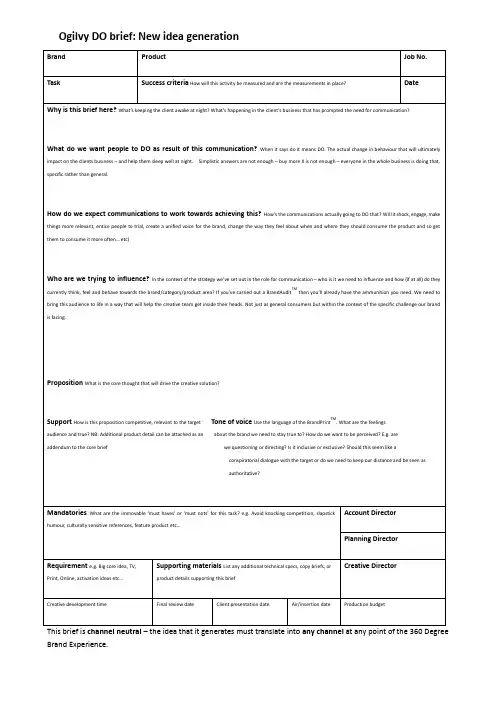创意简报(奥美)
- 格式:ppt
- 大小:2.07 MB
- 文档页数:37
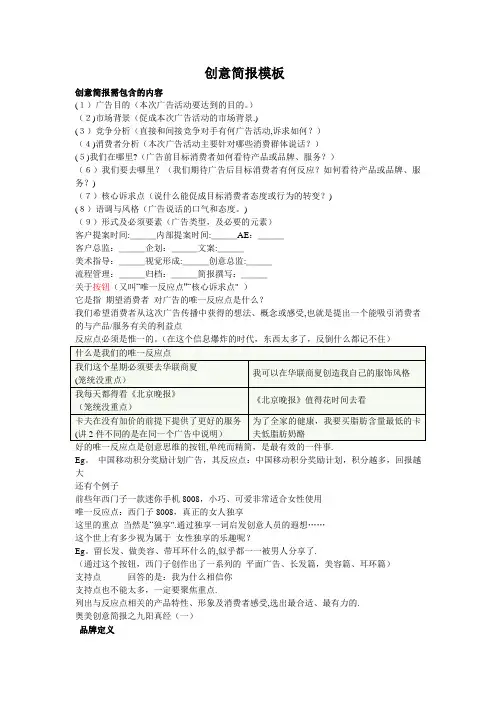
创意简报模板创意简报需包含的内容(1)广告目的(本次广告活动要达到的目的。
)(2)市场背景(促成本次广告活动的市场背景.)(3)竞争分析(直接和间接竞争对手有何广告活动,诉求如何?)(4)消费者分析(本次广告活动主要针对哪些消费群体说话?)(5)我们在哪里?(广告前目标消费者如何看待产品或品牌、服务?)(6)我们要去哪里?(我们期待广告后目标消费者有何反应?如何看待产品或品牌、服务?)(7)核心诉求点(说什么能促成目标消费者态度或行为的转变?)(8)语调与风格(广告说话的口气和态度。
)(9)形式及必须要素(广告类型,及必要的元素)客户提案时间:___内部提案时间:___AE:___客户总监:___企划:___文案:___美术指导:___视觉形成:___创意总监:___流程管理:___归档:___简报撰写:___关于按钮(又叫“唯一反应点"“核心诉求点" )它是指期望消费者对广告的唯一反应点是什么?我们希望消费者从这次广告传播中获得的想法、概念或感受,也就是提出一个能吸引消费者的与产品/服务有关的利益点好的唯一反应点是创意思维的按钮,单纯而精简,是最有效的一件事.Eg。
中国移动积分奖励计划广告,其反应点:中国移动积分奖励计划,积分越多,回报越大还有个例子前些年西门子一款迷你手机8008,小巧、可爱非常适合女性使用唯一反应点:西门子8008,真正的女人独享这里的重点当然是“独享".通过独享一词启发创意人员的遐想……这个世上有多少视为属于女性独享的乐趣呢?Eg。
留长发、做美容、带耳环什么的,似乎都一一被男人分享了.(通过这个按钮,西门子创作出了一系列的平面广告、长发篇,美容篇、耳环篇)支持点回答的是:我为什么相信你支持点也不能太多,一定要聚焦重点.列出与反应点相关的产品特性、形象及消费者感受,选出最合适、最有力的.奥美创意简报之九阳真经(一)品牌定义用形象化的方式来描绘本品牌独特的个性,如果是个复杂的品牌,它给你的第一印象是什么呢!如果本品牌现在没有个性,我们期望它成为什么样子呢!品牌定义的作用是在wie创意人员定义本品牌究竟是什么!定义品牌时不要忽略产品,品牌定义可能直接从产品得来;不是平淡泛泛的产品描述,应该是对品牌及其个性的生动描述。
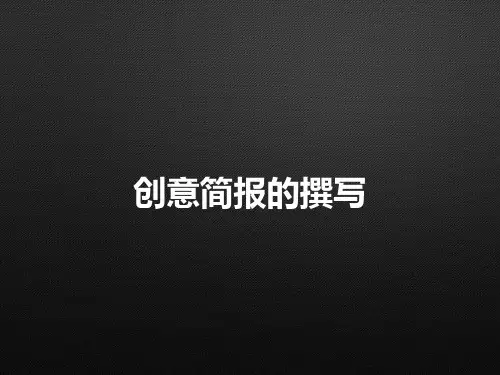
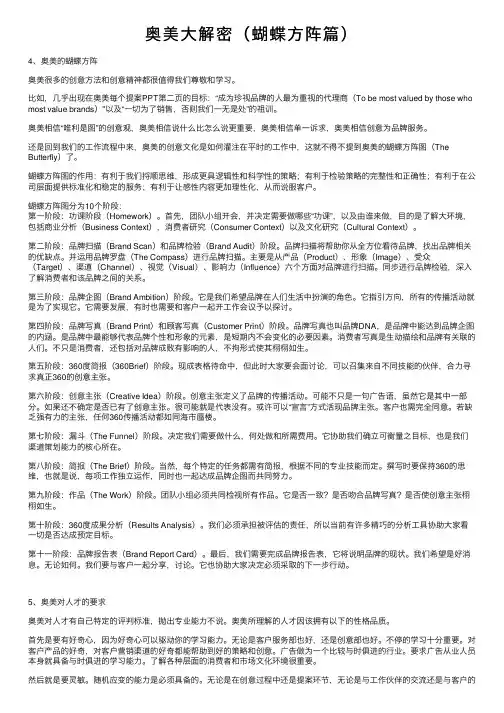
奥美⼤解密(蝴蝶⽅阵篇)4、奥美的蝴蝶⽅阵奥美很多的创意⽅法和创意精神都很值得我们尊敬和学习。
⽐如,⼏乎出现在奥美每个提案PPT第⼆页的⽬标:“成为珍视品牌的⼈最为重视的代理商(To be most valued by those who most value brands)"以及“⼀切为了销售,否则我们⼀⽆是处”的祖训。
奥美相信“唯利是图”的创意观,奥美相信说什么⽐怎么说更重要,奥美相信单⼀诉求,奥美相信创意为品牌服务。
还是回到我们的⼯作流程中来,奥美的创意⽂化是如何灌注在平时的⼯作中,这就不得不提到奥美的蝴蝶⽅阵图(The Butterfly)了。
蝴蝶⽅阵图的作⽤:有利于我们捋顺思维,形成更具逻辑性和科学性的策略;有利于检验策略的完整性和正确性;有利于在公司层⾯提供标准化和稳定的服务;有利于让感性内容更加理性化,从⽽说服客户。
蝴蝶⽅阵图分为10个阶段:第⼀阶段:功课阶段(Homework)。
⾸先,团队⼩组开会,并决定需要做哪些“功课”,以及由谁来做,⽬的是了解⼤环境,包括商业分析(Business Context),消费者研究(Consumer Context)以及⽂化研究(Cultural Context)。
第⼆阶段:品牌扫描(Brand Scan)和品牌检验(Brand Audit)阶段。
品牌扫描将帮助你从全⽅位看待品牌,找出品牌相关的优缺点。
并运⽤品牌罗盘(The Compass)进⾏品牌扫描。
主要是从产品(Product)、形象(Image)、受众(Target)、渠道(Channel)、视觉(Visual)、影响⼒(Influence)六个⽅⾯对品牌进⾏扫描。
同步进⾏品牌检验,深⼊了解消费者和该品牌之间的关系。
第三阶段:品牌企图(Brand Ambition)阶段。
它是我们希望品牌在⼈们⽣活中扮演的⾓⾊。
它指引⽅向,所有的传播活动就是为了实现它。
它需要发展,有时也需要和客户⼀起开⼯作会议予以探讨。
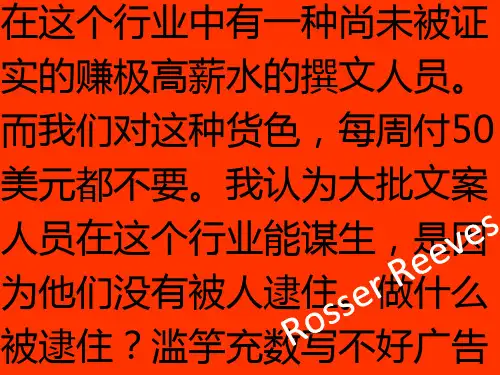
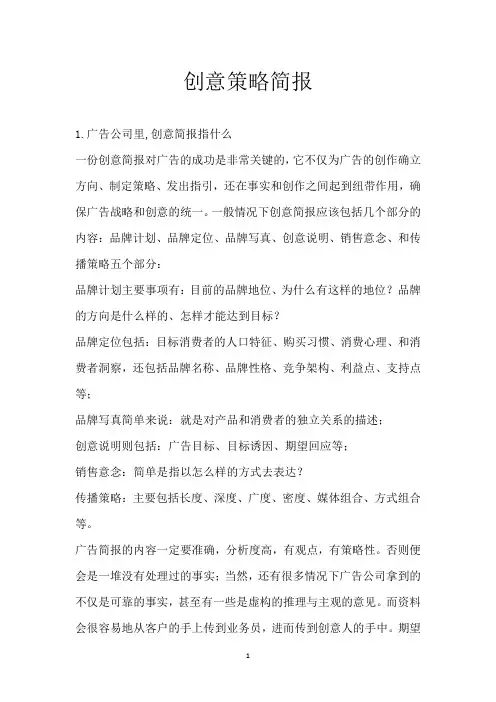
创意策略简报1.广告公司里,创意简报指什么一份创意简报对广告的成功是非常关键的,它不仅为广告的创作确立方向、制定策略、发出指引,还在事实和创作之间起到纽带作用,确保广告战略和创意的统一。
一般情况下创意简报应该包括几个部分的内容:品牌计划、品牌定位、品牌写真、创意说明、销售意念、和传播策略五个部分:品牌计划主要事项有:目前的品牌地位、为什么有这样的地位?品牌的方向是什么样的、怎样才能达到目标?品牌定位包括:目标消费者的人口特征、购买习惯、消费心理、和消费者洞察,还包括品牌名称、品牌性格、竞争架构、利益点、支持点等;品牌写真简单来说:就是对产品和消费者的独立关系的描述;创意说明则包括:广告目标、目标诱因、期望回应等;销售意念:简单是指以怎么样的方式去表达?传播策略:主要包括长度、深度、广度、密度、媒体组合、方式组合等。
广告简报的内容一定要准确,分析度高,有观点,有策略性。
否则便会是一堆没有处理过的事实;当然,还有很多情况下广告公司拿到的不仅是可靠的事实,甚至有一些是虚构的推理与主观的意见。
而资料会很容易地从客户的手上传到业务员,进而传到创意人的手中。
期望一切创意便会从这堆所谓简报中产生出来。
2.什么是创意简报啊创意简报,简而言之就是用文字、图片、视频等形式将所要介绍的创意生动、形象的向其特定的受众展示出来,目换是使受众了解、认可并赞成投资你的创意。
当然,这里所介绍的不包括创意的创建工作,我们只负责简报的创建工作。
如要做好创意简报,需要做以下具体工作:准备工作如有条件,可申请主管领导组织成立一个小小的团队,邀请有图像处理及文字功力深厚,即专业的技术人员参加,同时获得相应的资源支持。
定位简报的受众对象,比如受众的职位,年龄,性别,文化。
简报所需要的相关信息,比如文字资料、图片。
2.简报的设计根据对受众对象的分析,选择并设计合适的简报类型和模板。
因为是创意简报,模板的设计非常重要,直接会影响人们对创意的第一印象。
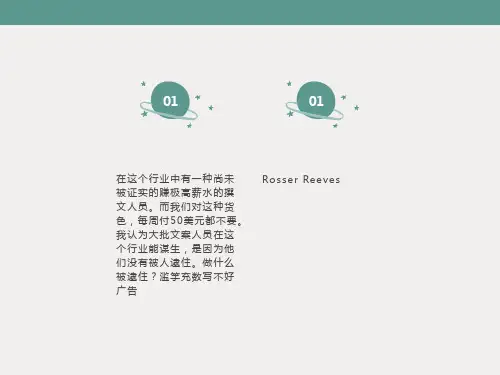
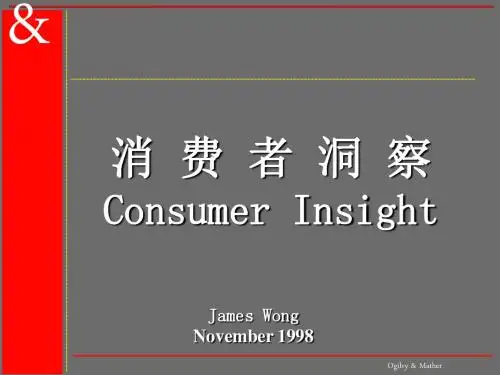
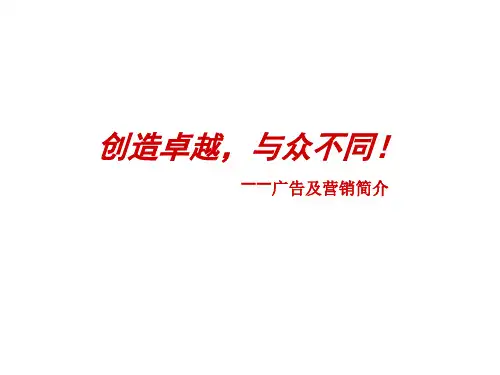
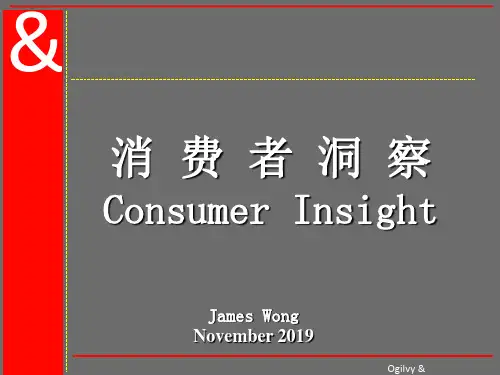
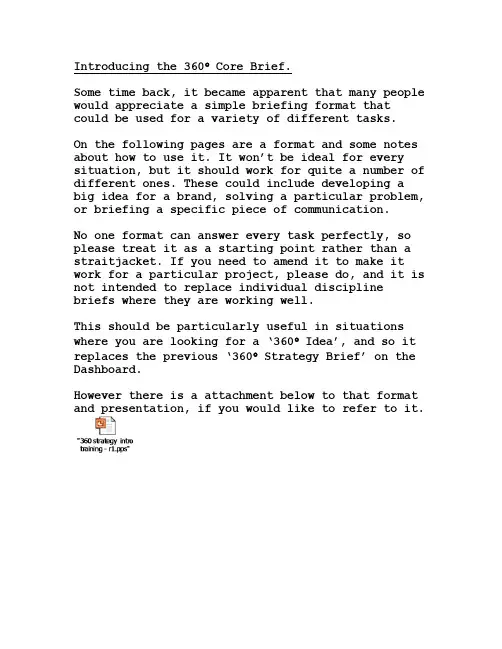
Introducing the 360︒ Core Brief.Some time back, it became apparent that many people would appreciate a simple briefing format thatcould be used for a variety of different tasks.On the following pages are a format and some notes about how to use it. It won’t be ideal for every situation, but it should work for quite a number of different ones. These could include developing abig idea for a brand, solving a particular problem, or briefing a specific piece of communication.No one format can answer every task perfectly, so please treat it as a starting point rather than a straitjacket. If you need to amend it to make it work for a particular project, please do, and it is not intended to replace individual disciplinebriefs where they are working well.This should be particularly useful in situations where you are looking for a ‘360︒Idea’, and so it replaces the previous ‘360︒Strategy Brief’ on the Dashboard.However there is a attachment below to that format and presentation, if you would like to refer to it.Ogilvy 360 Core Brief.What is the key challenge we are facing?Who are we talking to?What do they think, feel, and do currently?How do we want to change or reinforce this?If we could convince them of one thing, what would it be?Why should they believe us?How will we know if we’re succeeding?What else could be helpful?What do we need and when?The 360︒Core Brief: a user’s guide.1. General points.Remember: real people don’t see briefs, (unless you happen to leave one on the bus.) The importantthing for a brief is the effect it has on its own target audience: the people who have to come upwith the ideas. A good brief will leave themfeeling they have two things:•Direction•InspirationDo whatever you need to achieve that goal. Thebrief itself is not the end point: it’s part of a wider discussion that starts earlier and continues after the briefing itself. Don’t be afraid to have further conversations after the brief has gone in, based on new learning and/or thinking. After all, as someone once said: ‘there are no great briefs, only great work.’An effective brief usually seems to have four qualities – focus, air, texture, and spark. (FATS, if you like acronyms.)Focus: in reality, those people who are going to have to solve the problem usually reduce the brief to one or two lines. So it’s important that thebrief has a consistent and easily grasped train of thought. If it’s confusing, it is more likely to be ignored.Air: the brief should be tight, but not so tight that the reader is suffocated. It should be very clear about the problem but allow for a variety of creative solutions.Texture: a brief should paint a rich picture, particularly of the person or culture we are trying to influence, whether they are end consumers or another important group. It should feel like it comes from real life, not the meeting room.Spark: your brief is competing with many other things for the attention and enthusiasm of the people who have to work on it. So it should be crying out:“Work on me! Work on me! Working on this brief’s going to be fun!”Finally, the brief should be as concise as you can reasonably make it.2. The components of the brief.‘What is the key challenge we are facing?’Any basic information necessary to set the context - market share, recent brand history, basic product details etc. All boiled down into one mainchallenge for the brand. This section should be quite short.‘Who are we talking to?’The people that this particular piece of work will address. Whether we are talking to actual‘consumers’ or other groups of people who may influence their decision, the people we describe should feel like they are alive and real, not just statistics. Consider: pen-portraits, photographs, video, quotations, favorite TV shows, music, websites, activities. Sometimes you may need to bring to life more than one group of people, particularly if the brief is for a 360 idea.‘What do they think, feel, and do currently?’Their views and behaviour concerning this category and our brand. Include feelings as well as rational stuff.How do we want to change or reinforce this?The specific effects we want our work to have onthe people we’re talking to.Sometimes, it’s just reinforcing what they already feel, in a fresh way. More often, though, we’ll be looking to achieve some specific change(s).‘If we could convince them of one thing, what would it be?’The absolute essence of what we want people to take out of the communication or idea.‘Why should they believe us?’Any interesting information that supports the main thought, emotionally or rationally.‘How will we know if we’re succeeding?’Real, measurable effects – the things we will be looking at, with the client, to judge whether the work is successful. For example:“a 20% increase in purchase intent”“a 5% response rate”“Coke seen not just as a music sponsor, but an integral and credible contributor to the energy of the Australian mus ic scene.”‘What else could be helpful?’For example: media ideas, tonal guidelines, budgets, any (not many, please) ‘compulsory’ elements. Plus any stimulus or ideas that you think could beuseful. Movie clips, drawings from research,articles from the paper, your own ideas, etc.‘What do we need and when?’Very important, obviously! Make sure you’re being realistic.。
